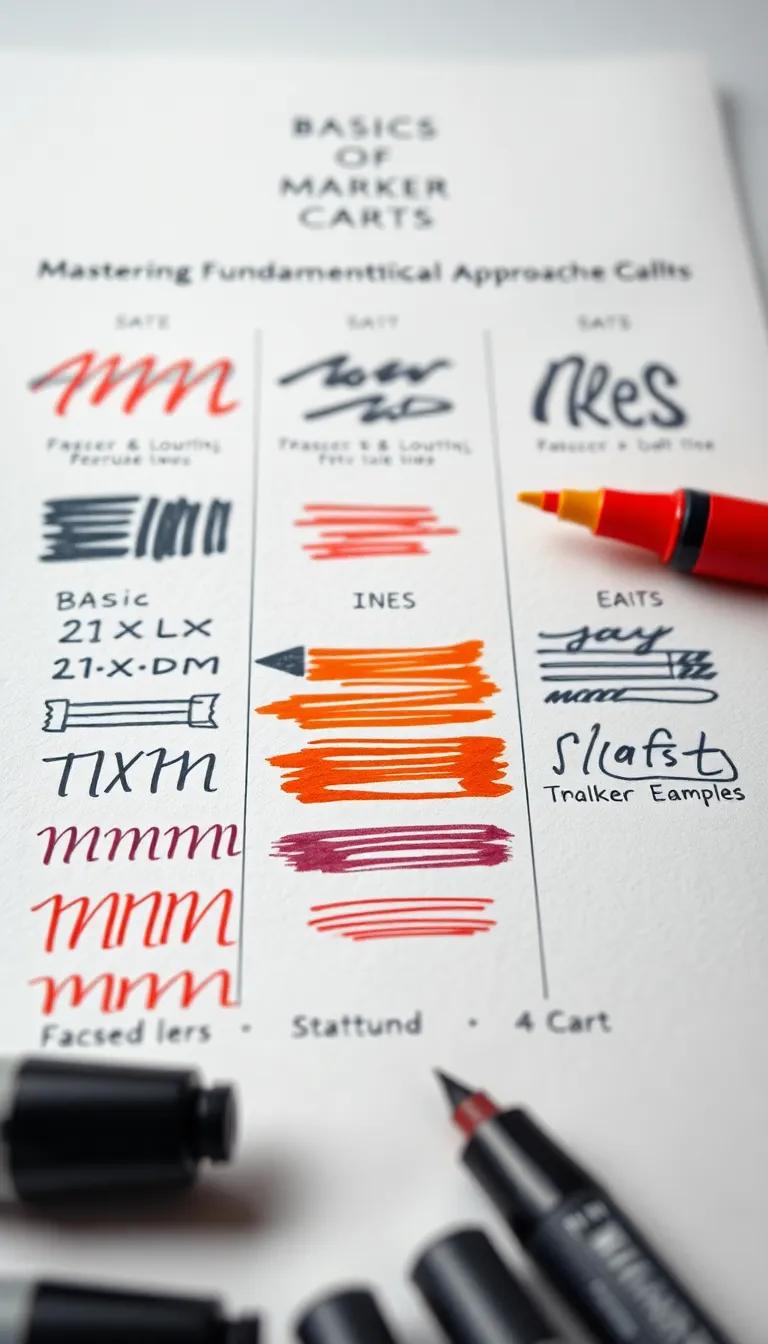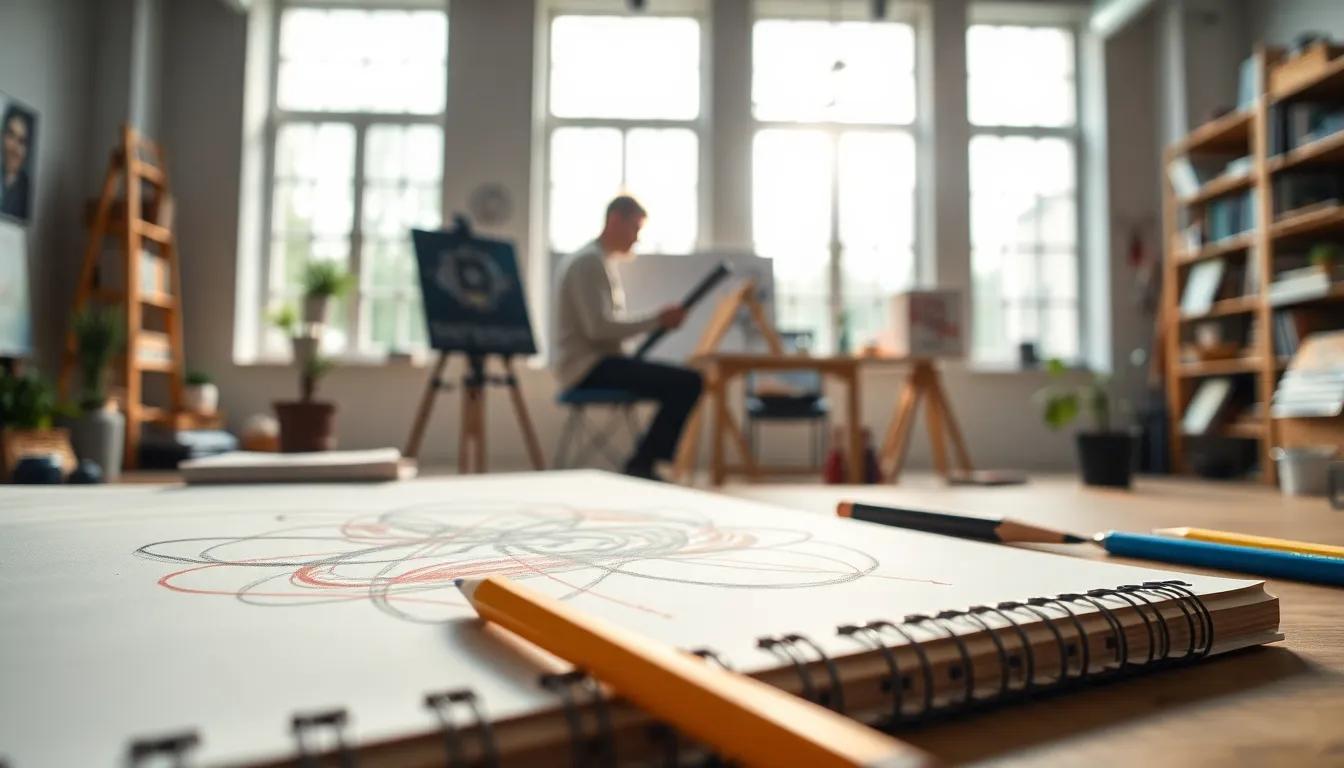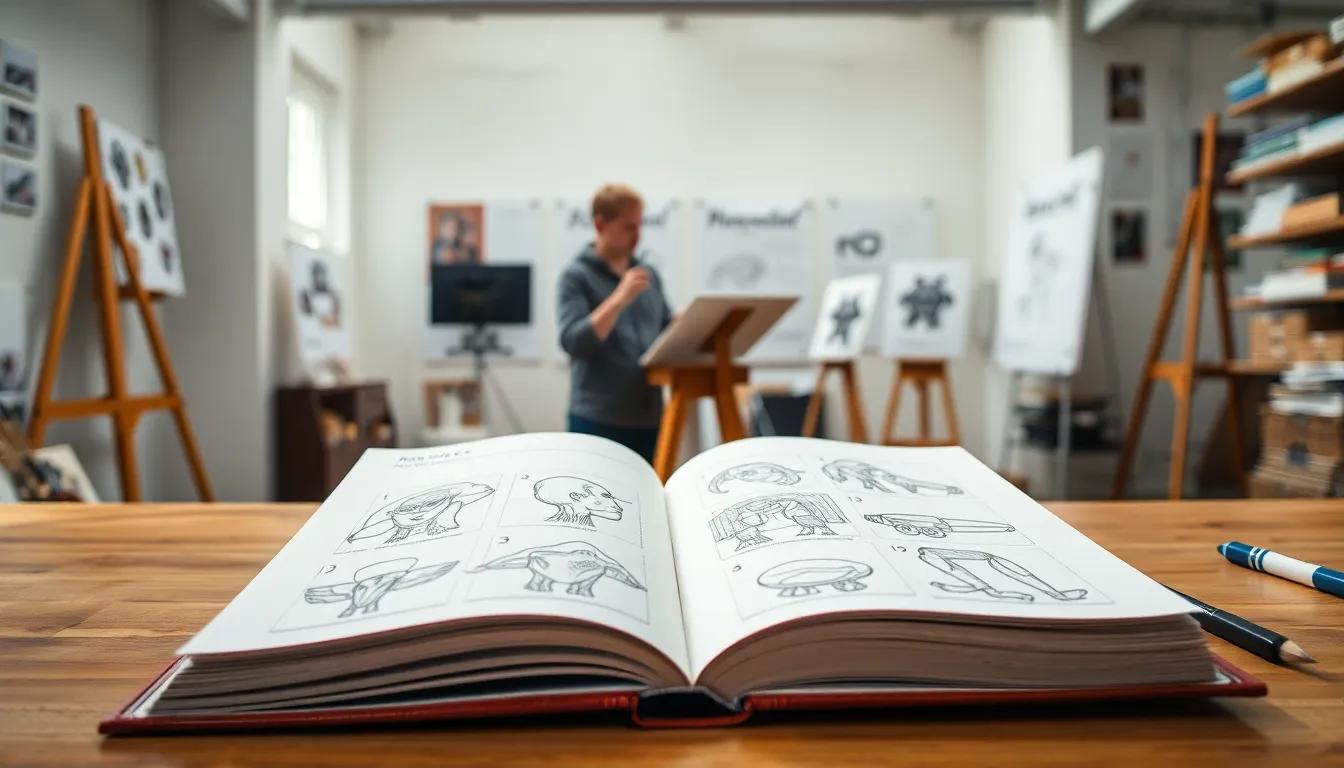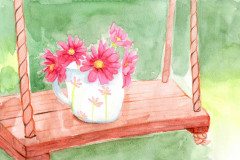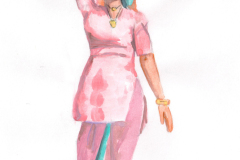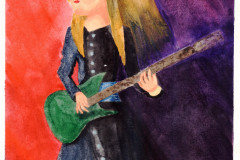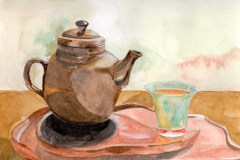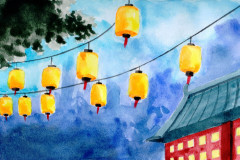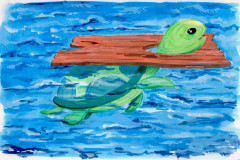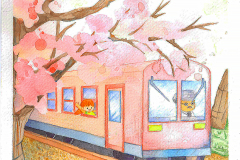Introduction
Markers have emerged as a vibrant medium in the world of artistic expression, offering endless possibilities for creativity. Whether you’re a novice or a seasoned artist, the versatility of markers can help you produce bold art pieces that stand out. This article delves into various markers drawing ideas, showcasing both traditional and modern techniques that maximize the potential of this dynamic medium. From intricate illustrations to abstract masterpieces, markers provide a way to convey emotions and ideas in visually striking formats.
The journey of creating art with markers can be explored through diverse styles and approaches, including layering techniques and color blending methods. Not only do these ideas serve as inspiration for individual projects, but they also encourage artists to experiment outside their comfort zones. We’ll guide you through various chapters, each highlighting unique techniques and innovative concepts, ensuring that by the end, you’ll be equipped with a toolkit of marker drawing ideas for your next bold creation.
The Basics of Marker Techniques Mastering Fundamental Approaches for Marker Art
Markers are versatile tools in the world of art, offering a vast range of creative possibilities. To create bold art pieces, it is essential to familiarize oneself with fundamental marker techniques such as blending, layering, and various application methods. Understanding these techniques enhances the ability to achieve artistic goals, resulting in captivating artwork.
Understanding Marker Types
Choosing the right markers is vital for different artistic styles and desired effects. Artists typically use alcohol-based markers for their smooth application and ability to blend effortlessly. These markers dry quickly, making them ideal for detailed work. Water-based markers offer a different approach, providing a softer look and easier cleanup but may not blend as smoothly. Furthermore, fine-tipped markers allow for precision in line work, while broad-tipped markers are excellent for filling in larger areas. Before beginning a project, consider the intended style and effect to guide the selection of markers.
Fundamental Techniques in Marker Drawing
The application methods of markers can greatly influence the final artwork. A basic technique is the straight application, where the marker is moved across the paper in smooth strokes. This method works well for laying down color but may lack depth without additional techniques. Layering is another essential skill, where multiple colors are applied in succession. This approach can build texture and dimension in the artwork, creating a more vibrant and dynamic look.
Blending is an incredibly useful technique for achieving seamless transitions between colors. Artists can utilize techniques such as feathering or flicking their markers for smoother transitions. Feathering involves gently applying overlapping strokes, while flicking uses short, quick motions to blend colors at the edges. Understanding how to layer and blend colors is key to creating depth, movement, and richness in your marker artwork.
As you practice these techniques, consider experimenting with different marker types and their unique qualities. Each marker behaves differently, and the exploration of these variations can lead to exciting and bold artistic expressions. With a solid grasp of the fundamentals, artists can confidently embark on creative journeys that push the boundaries of marker art.
Color Blending Techniques for Innovative Marker Art Creations
Exploring Color Blending Methods Using Markers
Color blending is a transformative technique in marker drawing that adds depth and vibrancy to your artwork. Understanding various blending methods will open a new realm of possibilities for creative expression. One common approach is *gradient blending*, where subtle transitions between colors can create stunning visual effects. This technique involves applying two or more colors close to each other and carefully merging them using the marker’s brush tip. To achieve a smooth gradient, it’s essential to start with light pressure and continuously build up the color intensity.
Another popular method is using a *colorless blender*. This tool acts as a medium to unify and soften the colors applied on the paper. To use it effectively, start by applying your base colors, then take the colorless blender and gently sweep it over the areas where the colors meet. The result will be a beautifully blended layer that enhances the overall composition without overpowering the colors beneath. Be sure to keep your strokes light and circular to ensure an even blend and prevent streaking.
Layering colors is another powerful technique that enriches the final piece with depth. This involves applying one color on top of another to create unique undertones and shades. Begin with light colors and gradually add darker tones. For instance, overlaying a deep blue on a pastel blue can yield a rich sapphire shade. Experimenting with varying pressure and strokes can produce diverse effects—from soft transitions to striking contrasts—allowing your imagination to run wild.
For those eager to experiment further, combining these techniques leads to innovative outcomes. Layering colors while using the colorless blender can yield stunning results—applying a vibrant hue and using the blender to soften the edges allows for intricate designs that maintain their boldness. Another approach is to create a gradient effect with a colorless blender, gradually transitioning from one vivid color to another. This method not only maintains the integrity of the original colors but also enhances visual interest.
Incorporating these blending techniques into your artwork can completely transform your style, making your creations more dynamic and captivating. As you delve into these methods, remember that practice will enable you to master the art of blending, resulting in creative and bold art expressions.
Unique Textures and Patterns in Marker Art
Creating Interesting Textures with Marker Techniques
Markers offer a versatile medium for artists aiming to add unique textures and patterns to their creations. By utilizing specific techniques such as cross-hatching, stippling, and scribbling, artists can elevate their artwork into bold statements that engage viewers on multiple levels.
Cross-hatching involves using overlapping parallel lines to build depth and dimension. This technique can be employed in various orientations to create intricate patterns resembling fabrics or natural textures, such as wood grain or fur. For added complexity, varying the spacing between lines can help denote shadow and light, allowing for a more dynamic representation. Experimenting with different types of markers—like fine-point and chisel tips—can enhance the variety of lines created, enabling artists to develop rich visual interest.
Stippling, on the other hand, introduces a unique tactile quality through the application of small dots. This approach is excellent for simulating gradients or soft textures, as the density and arrangement of dots can control lightness and darkness in a composition. Artists can creatively combine stippling with other techniques, such as color layering, to highlight certain areas and draw attention. Using markers of varying saturation can also enrich the textural effect; darker hues can anchor a piece, while lighter ones can offer a sense of airiness.
Scribbling might seem simplistic, but when executed thoughtfully, it can serve as a foundation for spontaneous designs or background elements that invoke movement. Artists can create visual rhythms through freeform scribbles, layering them in different colors or densities to produce an eye-catching backdrop. This technique can also express emotions or energy levels in a piece, contributing to its overall impact.
Combining these techniques allows for a multitude of creative possibilities, encouraging artists to experiment with each method’s unique qualities. Layering cross-hatching with stippling, for example, can produce an engaging interplay of textures that captivates the imagination. In the colorful world of marker art, the integration of textures and patterns paves the way for iconic works that resonate deeply with audiences.
Exploring Different Styles Harnessing Markers for Vibrant Artistic Expression
Diverse Artistic Techniques to Explore
Markers offer an incredible palette for artists looking to express themselves through various artistic styles. From the playful lines of cartooning to the meticulous details found in realism, markers can adapt to nearly any artistic vision. This versatility is particularly useful for artists experimenting with bold creations, as the fluidity of markers allows for unique expressions and techniques.
In cartooning, markers shine brilliantly with their vibrant hues and ability to create sharp lines. Artists can develop characters that come to life through exaggerated features and vivid colors. Utilizing thicker tips for outlines and finer tips for detail allows for a dynamic range of depth in the illustrations. Cartoon styles often favor a strong use of contrast, inviting artists to layer colors and utilize markers’ ability to blend seamlessly, resulting in characters that pop off the page.
Realism presents a different challenge and opportunity. Here, markers can replicate the subtle nuances of light and shadow found in the natural world. Artists may employ techniques like cross-hatching and gradient blending to achieve lifelike skin tones or intricate textures in fabric. By layering colors and adjusting the pressure applied, artists can create the illusion of depth between foreground and background. Realism with markers often requires patience and a keen eye for detail, but the results can be strikingly beautiful.
For those seeking a bolder and more conceptual approach, abstract art invites artists to think outside the box. Markers can flow freely, allowing splashes of color and geometric shapes to intertwine on the canvas. This style focuses on the emotional response evoked by colors and forms, rather than realistic representations. Artists may explore various techniques, like dripping or scribbling to create movement and energy in their pieces. Abstract art celebrates spontaneity, encouraging the artist to embrace unexpected outcomes and explore the freedom markers provide.
The exploration of these artistic styles using markers opens a world of creativity that engages both the artist and the viewer. Each style presents unique opportunities for experimentation, making marker art a vibrant and accessible medium for artistic expression.
Creating Mixed Media Art Innovative Markers Drawing Ideas for Bold Art Creations
Combining Markers with Other Materials
The beauty of mixed media art lies in its endless possibilities, where artists can blend various materials to produce rich and dynamic works. Markers play a pivotal role in this artistic fusion, allowing creators to introduce sharp lines, vibrant colors, and intricate details. When paired with other mediums such as acrylics, watercolors, or collage materials, markers can enhance visual storytelling and deepen the emotional impact of the piece.
One innovative approach involves layering markers over acrylic paint. Start by applying a base layer of acrylics to create a textured or abstract background. Once dried, markers can then be used to draw detailed images or patterns on top, creating a striking contrast between the fluidity of paint and the precision of markers. This technique not only adds depth but also allows for a playful exploration of how colors interact with one another.
Watercolors and markers can also create intriguing effects. By painting a watercolor base, artists can then use water-based markers to outline shapes or add color. The unique quality of watercolor allows the marker ink to blend beautifully, resulting in softened edges and a cohesive look. This combination can give a whimsical feel to any artwork, ideal for those exploring fantasy themes or ethereal landscapes.
Collaging is another fantastic technique worth considering. By assembling various paper elements—magazines, textured papers, or handwritten notes—an artist can create a layered foundation. Once this collage is established, markers can bring life to the composition by adding doodles, thoughts, or intricate drawings that connect the disparate elements. The juxtaposition of different textures and the meticulousness of marker work can yield compelling visual narratives.
Incorporating unconventional surfaces presents yet another avenue for experimentation. Utilize markers on fabric, wood, or even glass, expanding the dimensions of your mixed media projects. These surfaces can transform traditional art pieces into functional items like bags or home decor, allowing for artistry to blend seamlessly into daily life. The adaptability of markers only fuels creativity, encouraging artistic innovation.
The versatility of markers combined with other art supplies not only embraces traditional techniques but also opens the door to unconventional possibilities, inviting artists of all levels to redefine their creative boundaries.
Marker Drawing for Illustration Harnessing the Power of Markers for Creative Design
Conceptualizing Your Marker Illustration
Marker illustrations are a unique combination of simplicity and versatility, allowing artists to express their creativity in bold ways. The initial phase of creating an illustration with markers begins with concept development. Brainstorm ideas that resonate with your style and theme, which might include nature scenes, abstract designs, or character illustrations. Thumbnails are a productive way to visualize your thoughts; sketch small versions of your ideas to explore composition and layout without committing too much time to any single concept.
Once you have a few thumbnails, choose the one that stands out most to you. Consider the story you want to tell with your illustration. Every element should serve a purpose in conveying that narrative, whether it’s defining a character’s emotion or creating a sense of depth in your background. Be bold—allow your imagination to take risks, and don’t hold back from experimenting with unconventional themes or styles. The beauty of markers is their adaptability; they can lend themselves well to both realistic representations and stylized interpretations.
Practical Steps for Effective Design
Transitioning from concept to execution requires attention to technique. Selecting the right markers is critical for achieving the desired look. Alcohol-based markers offer vibrancy and blendability, while water-based markers provide a softer finish but with limited blending capabilities. Test your markers on the chosen paper to ensure compatibility, as some surfaces allow for better control than others.
Start your illustration by outlining your design lightly with a pencil. This aids in establishing placement without committing to ink immediately. After outlining, begin applying color with larger areas first. Use a flicking motion to create texture and depth, gradually layering colors to achieve shading and highlights. Don’t hesitate to use markers in unconventional ways, such as layering or mixing colors directly on the paper for a more dynamic effect.
Finish by adding details with finer tip markers or even incorporating additional media for texture, including colored pencils or gel pens for highlights. The goal is to merge your creative vision into a cohesive artwork that reflects your personal style. As you advance, keep practicing and refining your skills, ensuring that each illustration pushes the boundaries of your marker capabilities.
Displaying and Preserving Marker Art Techniques for Longevity in Bold Creations
Importance of Proper Display and Preservation
Displaying marker art not only enhances its beauty but also protects it from environmental elements that could lead to deterioration. Markers, particularly alcohol-based ones, are susceptible to fading when exposed to direct sunlight or moisture. To ensure your vibrant creations remain intact, understanding proper display and preservation techniques is paramount.
Framing Techniques for Marker Art
Framing is one of the most effective ways to protect marker art. Opting for UV-filtering glass can significantly reduce the risk of fading, allowing the colors to maintain their brilliance over time. When selecting a frame, it is essential to choose a mold that complements the artwork without overshadowing it. Simple, sleek frames often work best for bold creations, allowing the art to remain the focal point.
For a layered effect, consider using a mat board that enhances the colors of the marker art. Choose a color that contrasts with your artwork, as this can create depth and draw attention to the details. Mount the artwork using acid-free tape or hinges to ensure that the paper is not damaged over time. This helps maintain the integrity of the piece while minimizing direct contact with the glass.
Storage Solutions to Ensure Longevity
If you prefer not to display your marker art right away, proper storage is vital for its preservation. Begin by placing the artwork in a protective sleeve made of archival-quality plastic. This shields the art from dust, moisture, and pollutants that could cause deterioration. Store the pieces flat to prevent creasing or folding. If space allows, use a portfolio case designed for artists, which provides both protection and easy accessibility.
It is also beneficial to keep artworks in a cool, dry environment where temperature fluctuations and humidity are minimized. Avoid areas like attics or basements, where conditions can change drastically. Instead, consider a climate-controlled area in your home for optimal storage.
By implementing these framing techniques and storage solutions, you can create a lasting legacy of your marker art that retains its vibrancy and allure for years to come. Ensuring your bold creations are displayed and preserved properly is a testament to your creativity and dedication to the artistic process.
Conclusions
The use of markers in art offers an array of techniques and methods that can elevate your artistic journey. From color layering to dynamic sketching styles, experimenting with these ideas can lead you to unique, eye-catching creations. Markers are not only accessible and versatile but also serve as a gateway for artists to explore their individuality and style.
As artists, it’s essential to keep pushing boundaries and to embrace innovative methods. The ideas discussed throughout this article provide foundational concepts that can be adapted and expanded upon. By incorporating these innovative markers drawing ideas into your practice, you are well on your way to creating striking art that captures attention and communicates your unique vision.


